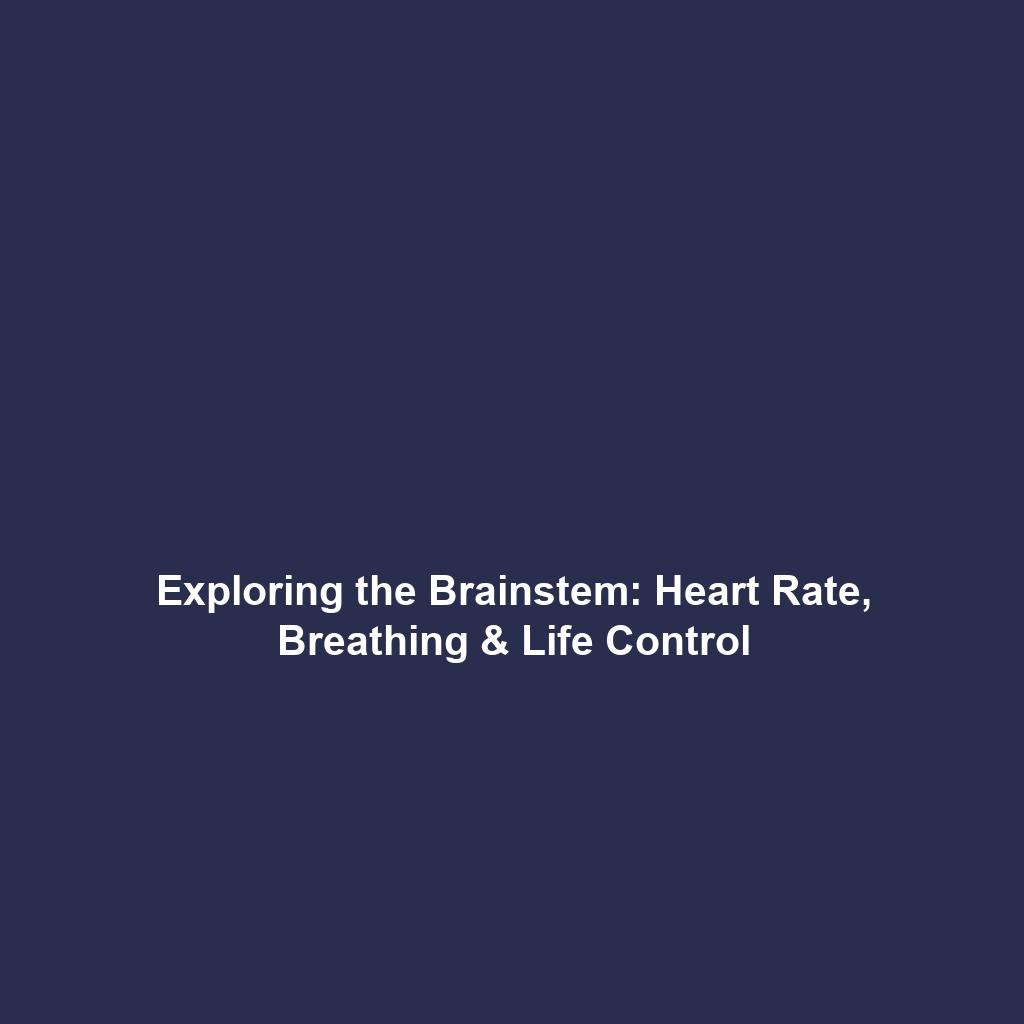The Brainstem: Controls of Life-Sustaining Functions in Biomechanics
The brainstem is a crucial element in the physiology of living organisms, serving as the control center for essential functions such as heart rate, breathing, and consciousness. Within the field of biomechanics, understanding the intricacies of the brainstem is vital as it directly influences bodily movements and physiological responses. By examining the mechanics of these vital systems, researchers can gain insights into various applications ranging from clinical interventions to robotics, highlighting the brainstem’s significant role in maintaining life.
Key Concepts of the Brainstem in Biomechanics
The brainstem connects the brain to the spinal cord and consists of three main components: the midbrain, pons, and medulla oblongata. Each of these structures contributes to various life-sustaining functions.
Heart Rate Regulation
The medulla oblongata houses the cardiac center, which regulates heart rate through autonomic pathways. Biomechanically, this influences blood flow and musculoskeletal activity during various states of rest or exertion.
Breathing Control
Breathing is managed by both the medulla and pons, coordinating the rhythmic contraction of respiratory muscles. This involuntary control is integral to providing oxygen for cellular respiration, a biomechanical process vital for movement and energy production.
Consciousness
The brainstem plays a vital role in maintaining consciousness and regulating sleep patterns. Any disturbances in this area can lead to severe implications for an organism’s biomechanical capabilities.
Applications and Real-World Uses
The knowledge of the brainstem’s functions has profound implications in the field of biomechanics. Here are some significant applications:
- Clinical Rehabilitation: Understanding the biomechanical impacts of brainstem impairments can guide therapeutic interventions for patients with stroke or traumatic brain injuries.
- Robotics: Insights into how the brainstem regulates movement are inspiring the development of more advanced robotic systems that mimic natural, life-sustaining functions.
- Exercise Science: Insights gained from studying the brainstem can enhance athletic training programs, optimizing heart rate and breathing during physical exertion.
Current Challenges in Studying the Brainstem
Despite the critical importance of the brainstem in biomechanics, several challenges hinder research and application:
- Complexity of Neural Pathways: Mapping the intricate neural connections and understanding their biomechanical effects is a significant hurdle.
- Variability Among Individuals: Differences in brainstem anatomy and function among individuals pose challenges in creating standardized approaches for treatment and technology.
- Limitations in Diagnostic Tools: There is a need for advanced imaging and diagnostic technologies to better understand the functionality of the brainstem in biomechanics.
Future Research and Innovations
Research into the brainstem continues to evolve, with promising developments on the horizon:
- Neural Interface Technology: Breakthroughs in brain-machine interfaces could pave the way for innovative devices that communicate directly with brainstem areas, aiding in rehabilitation.
- Biomimetic Robotics: Advancements in robotics that replicate brainstem functions may lead to more sophisticated prosthetics that adapt to user needs in real-time.
- Neurorehabilitation Techniques: Future research may produce targeted therapies that harness brainstem activity to help individuals recover motor functions more effectively.
Conclusion
In summary, the brainstem’s regulation of essential life-sustaining functions like heart rate, breathing, and consciousness underscores its significance within biomechanics. As research advances, it promises to bring forth innovative applications that could transform medical science and technology. For further reading on related topics, explore our sections on Neuroscience and Applications of Biomechanics.
